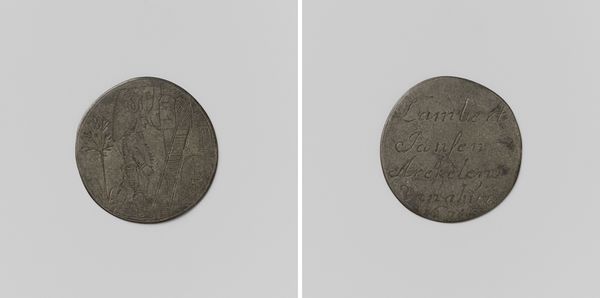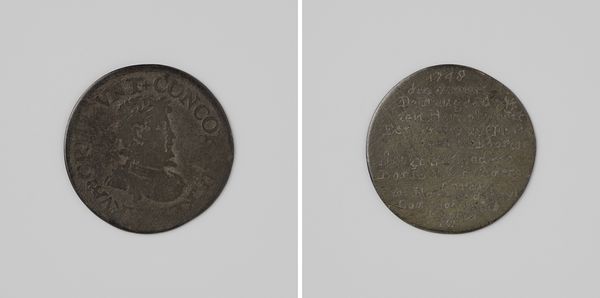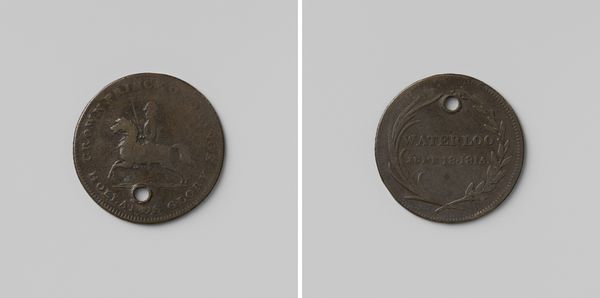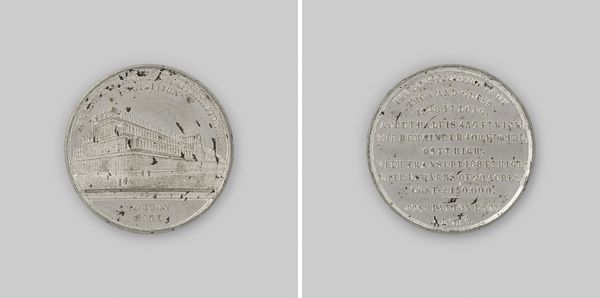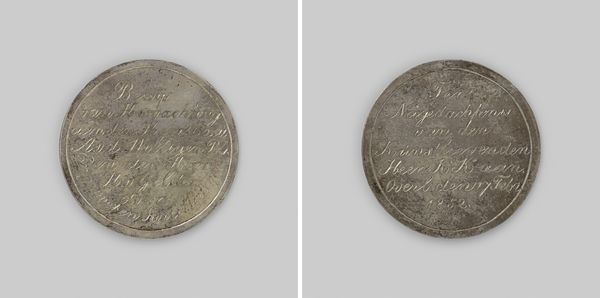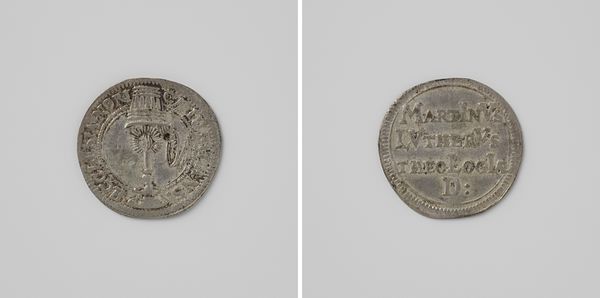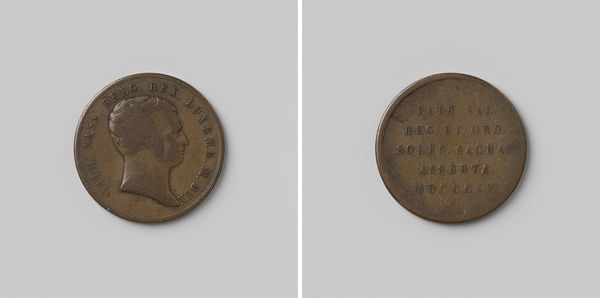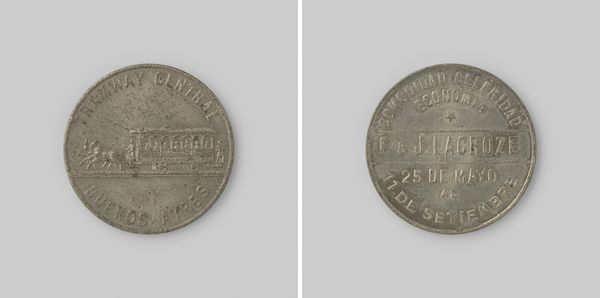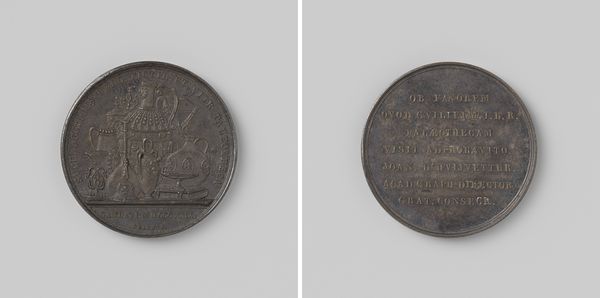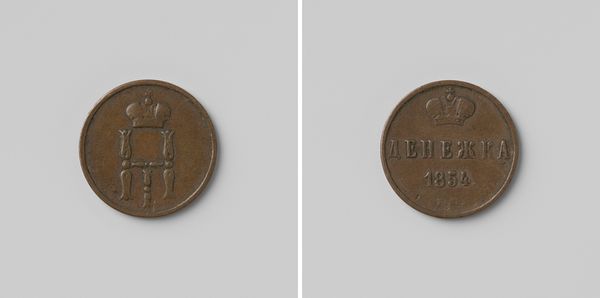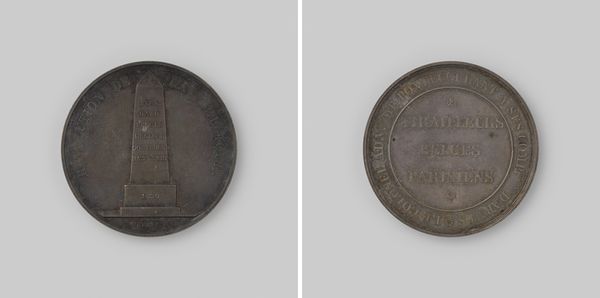
print, metal, relief
#
portrait
#
medieval
# print
#
metal
#
relief
#
ceramic
#
history-painting
Dimensions: diameter 3 cm, weight 3.29 gr
Copyright: Rijks Museum: Open Domain
Curator: This object, currently housed in the Rijksmuseum, is a print made in 1619, commemorating the Coronation of Ferdinand II as Holy Roman Emperor in Frankfurt. The print is crafted from metal in relief and its creator is listed as anonymous. Editor: It looks remarkably like a coin, though quite a large one. Its stark, metallic sheen projects a feeling of solemnity and historical weight. What do you make of its scale in relation to its subject? Curator: The print, presented as a coin or medallion, speaks to power dynamics of the era, especially in relation to papal power and monarchial succession. Ferdinand's coronation was, of course, deeply interwoven with the sociopolitical tensions of the Thirty Years' War. By representing the coronation on a coin, it subtly ties into the concept of legitimacy and value of the crown. Editor: The imagery is definitely potent. On one side, we have what appears to be a depiction of the coronation itself— a symbolic affirmation. And then on the reverse side is inscribed text which solidifies that significance and perhaps tries to cement Ferdinand's reign through religious rhetoric. Did currency take on almost totemic characteristics during that period? Curator: In some respects, yes. Coinage always carries a double meaning, both economic and symbolic. Here, this commemorative piece underscores the inextricable link between religious sanction, the political fortunes of Ferdinand, and material value. Think, for instance, of the rampant inflation occurring at the time; how this coin seeks to convey stability via symbolic representation. It really echoes throughout various social strata. Editor: It is interesting to note the potential audience, too. This would surely not have been in wide circulation like currency. Perhaps created as a gift to curry favour? Its symbolic power surely exceeds any intrinsic metal value. It would function as propaganda and memory made into an artifact. Curator: Absolutely. Examining it this way enables us to explore questions surrounding gender, race, and power inherent in European history. The act of memorialization and what is chosen to be commemorated speaks volumes. It’s far more than merely documentation, wouldn’t you say? Editor: Agreed. The iconographic choices provide lasting visual memories, which become historical touchstones for those that are initiated in its understanding. It shows how images are both created and remembered. Curator: Understanding historical objects like these invites an enriching reflection about today. Thank you for highlighting these iconographic details! Editor: My pleasure. Thank you for focusing on these often unspoken sociopolitical contexts!
Comments
No comments
Be the first to comment and join the conversation on the ultimate creative platform.

